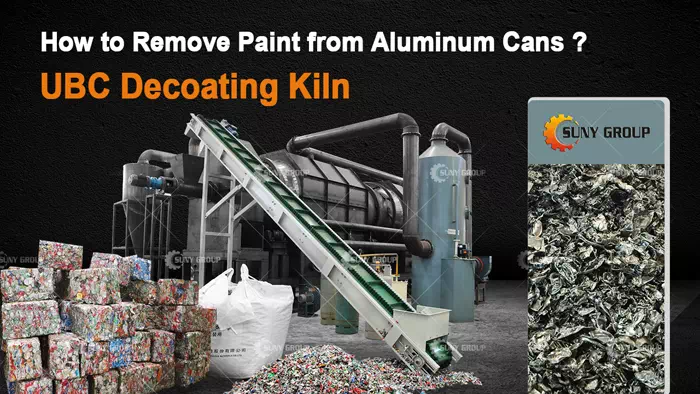Shredded UBC Drying and Decoating Furnace
In the aluminum can (UBC) recycling industry, the paint removal process is the core step in achieving high-quality recycled aluminum. A complete paint removal process not only reduces aluminum loss during the smelting stage but also significantly improves production safety and yields cleaner, more marketable recycled aluminum. To process crushed UBC material, a drying paint removal furnace is an indispensable piece of specialized equipment.

Shredded UBC Drying and Decoating Furnace
In practical applications, the ink, coatings, and organic matter on the surface of UBC can affect the purity of subsequent smelting and can even cause safety hazards such as increased flue gas volume and internal furnace deflagration. Therefore, how to efficiently remove the coating is a problem that recycling companies must solve. For crushed aluminum can material, the most mature and reliable method currently is to use a paint removal furnace employing pyrolysis, also known as a rotary kiln paint removal system. This equipment utilizes the principle of high-temperature pyrolysis to decompose the organic coating on the aluminum surface into volatile gases in a closed environment, thereby completely removing the surface paint layer.
During the pyrolysis process, the material slowly rolls and is heated evenly, causing the paint layer to peel off quickly without damaging the aluminum substrate. The generated waste gas enters the waste gas treatment system at the rear of the furnace, where pollutants are thoroughly removed through incineration, filtration, and cooling, ensuring emissions meet standards and maintaining a clean production environment. The resulting aluminum is clean and uncoated, with lower smelting losses and significantly improved recycled aluminum quality.
For recycling plants looking to improve recycling efficiency and aluminum quality, the UBC drying and paint stripping furnace is a key investment that directly enhances the value of the production line. Please feel free to contact us if you would like to learn about specific equipment costs, parameters, and process configurations.



